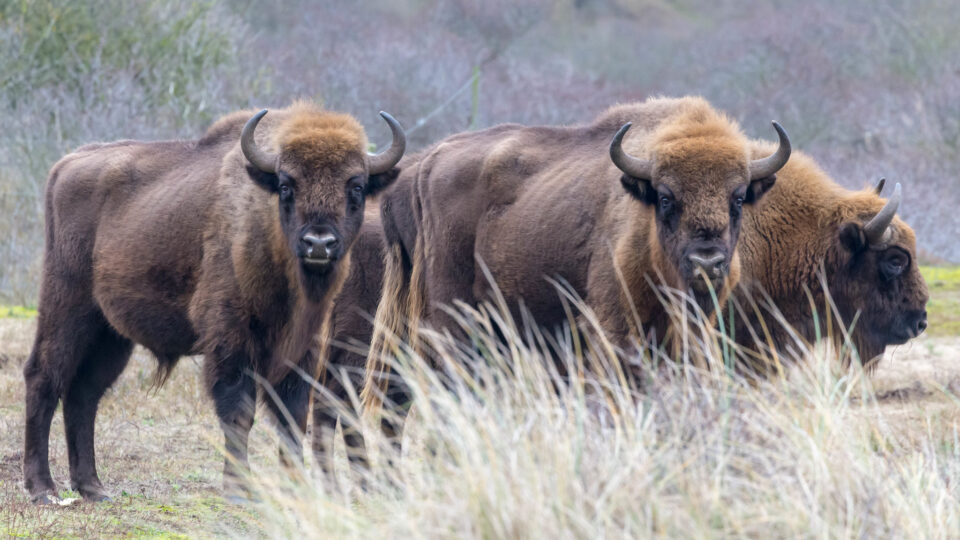Over the past few decades, research has identified the importance of large mammals like bison as ecosystem engineers. These animals shape and maintain various natural processes and, in the process, are responsible for the sequestering of large amounts of carbon. But large mammals – both herbivores and predators – have seen their numbers dwindle over time. At this point, nearly two-thirds of large carnivores are threatened with extinction. Overall, less than 6% of worldwide ecosystems have the extensive, intact large-mammal communities that were dominant 500 years ago.
Conservationists around the world have embarked on programs of “rewilding”- reintroducing large mammals into ecosystems. Some of the animals involved in these programs include brown bears, wild horses, jaguars, reindeer, Eurasian beavers, elk, moose, wolverines, tigers, hippos, and bison.
A group of bison raised in South Dakota have recently been transplanted to the Chihuhuan Desert at the US-Mexico border across Arizona, New Mexico, and Texas. There used to be huge bison herds in that region, but it has been largely bison-free for 150 years.
Perhaps more remarkably, wild bison are also being reintroduced into a forest near Canterbury, England. There haven’t been bison in the United Kingdom for thousands of years. But conservationists are introducing European bison into the British forest to knock down trees, trample shrubs, and create space for a greater diversity of flora and fauna.
Apart from the ecosystem goals of the British project, people in the UK, for the first time in over a thousand years, will be able to experience bison in the wild.
**********
Web Links
Gone for Thousands of Years, Wild Bison Return to the UK
Photo, posted December 31, 2018, courtesy of Marco Verch via Flickr.
Earth Wise is a production of WAMC Northeast Public Radio.

